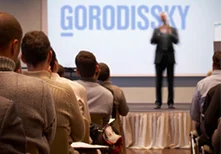A Parallel Tug of War in Parallel Import: Russia and Ukraine Grope for a Solution
23 September 2021There was no such concept as a parallel import in the USSR. When the USSR split, and the market economy came into being, many companies obtained the rights to import goods of all kinds. Accordingly, imports included the flow of goods authorised by the trademark owners as well as the goods imported by parallel importers without the knowledge of the relevant IP owner. Each country sought to regulate the parallel import and searched its way to deal with it from that time on. In Russia, legal regulation went from one extremity to another. When the first version of Trademark Law was adopted in 1992, Article 23 read that registration of a trademark does not allow its owner to forbid the use of the trademark in respect of the goods marketed by its owner or on his approval.
This ambiguous wording allowed for double understanding. Trademark owners understood it in such a way that the goods could be sold on Russian territory with their permission only. Parallel importers argued that if the goods were marketed by the trademark owner in a foreign country, those goods could be further sold also in Russia. The law indeed was not clear in that regard.
Concurrently, other provisions of the trademark law provided that unlawful use of a trademark entailed administrative, civil and criminal liability.
The Code of Administrative Offences, Article 1410, read that unlawful use of trademarks or similar designations for similar goods entails fines …. with confiscation of the products containing unlawful reproduction of the trademark. The keyword in that provision is “unlawful”. In the case of parallel import, the use may be interpreted as unlawful, but labelling is definitely lawful. What should the fate of parallel goods be? It was not clear.
Notwithstanding, there were a number of administrative cases resulting in fines and destruction of parallel goods, civil cases, and even one criminal case resulting in a heavy fine.
In order to bring clarity into the law, the words “on the territory of the Russian Federation” were added to the wording of Article 23: Registration of a trademark does not allow its owner to forbid the use of the trademark in respect of the goods marketed by its owner or on his approval on the territory of the Russian Federation. That amendment significantly changed judicial practice in that parallel importers could not refer to lawful exterritorial sales of goods.
Ukraine adopted its first trademark law two years later, in 1994. The Law of Ukraine “On Protection of Rights to the Marks for Goods and Services” (The Trademark Law) did not address specifically the issue of parallel import and merely prescribed that any encroachment on the trademark rights should be considered as violation thereof hich may entail liability. The use of the trademark meant any use in respect of the goods and services indicated in the trademark certificate. Hence, any case of parallel import was considered as an infringement of the trademark rights.
Later in 2003, Ukrainian legislators addressed the issue of parallel importation. They enlarged the scope of permitted trademark use by amending the Trademark Law.
The amended law read that exhaustion of the trademark rights takes place when the trademarked goods are placed on the market by the trademark owner or with his consent. The trademark owner could prohibit the further resale of trademarked goods if it resulted in change or deterioration of the quality and condition of goods. It is interesting to note that many years later, the Russian Constitutional Court issued a judgment vaguely reminiscent of the Ukrainian trademark law regarding the resale of parallel goods.
The Ukrainian law did not define at what point the holder’s rights were exhausted, i.e. at the time of the first sale (anywhere in the world) or when the goods were imported to Ukraine, with the rights holders’ permission. Thus, it was not clear whether the parallel import was an infringement of trademark rights or not.
Because of ambiguity of the legal provisions, the Ukrainian courts could apply both principles of trademark rights’ exhaustion (national or International) at their discretion. The courts were not able to develop a uniform approach either in civil or administrative proceedings.
Upon the trademark owner’s objection to parallel importation, the Ukrainian courts could deliver any of the judgments:
- The importation of goods without the trademark owner’s authorisation is unlawful. The claim to prohibit the import of trademarked goods shall be satisfied with full compensation of the trademark owners’ damages.
- Upon the first sale of the goods (in or outside Ukraine), the trademark owner loses his right to control further trademark use. The laws of Ukraine do not prescribe prohibition or limitation of the parallel importation and do not prescribe the obligation of the customs authorities to combat it. The prohibition of parallel import may take place only if it results in change or deterioration of the condition of the goods. Since the trademark owner did not prove that the condition and quality of the goods are affected, there is no ground to hold the importer liable for the violation of the trademark rights.
- In some cases, the courts did not analyse the legality of parallel importation and rendered their judgments based on general procedural rules and other provisions of substantive law.
Among the judgments rendered in favour of parallel importers, one such judgment confirmed the importer’s prior use of the trademark. In contrast, the other one confirmed that the disputed import took place before the entry of the trademark in the relevant Customs Register. Thus, there was no legal ground to object to the goods’ importation and involve the customs authorities.
As may be seen, the early versions of laws in Ukraine and Russia in some respects followed the same pattern: the lawmakers could not explicitly identify their position regarding parallel imports.
As time went on, Russia amended its trademark law and incorporated it into the Civil Code in 2008. Article 1252 of the Civil Code provided that “In cases where import of material carriers in which the means of individualisation is expressed results in infringement of rights for such means those material carriers shall be considered counterfeit and shall be destroyed by decision of the court”. Hence, it could be understood that there were two kinds of counterfeit goods – 1) those labelled unlawfully by someone other than the trademark owner and 2) labelled by the trademark owner but brought to Russia without permission of the trademark owner. This wording of the law provided ample opportunity for the IP owners (trademark owners in the first place) to claim infringement in courts.
The number of court cases grew, but parallel importers did not succumb, all the more that they were supported by the Russian Federal Antimonopoly Service.
As was mentioned above, administrative cases did not go well with the law. So, the High Commercial Court of Russia issued a judgment in 2009 that explained the difference between administrative and civil law applications regarding parallel import. It ruled that “Combination of liability measures constitutes an independent and sufficient set of measures for the protection of lawful interests of the right holder due to which, application of measures of public liability (i.e. administrative cases) cannot have as its aim the protection of the rights of the trademark owner only, and shall be directed in the first place at stopping the unlawful behaviour menacing the public order and, in particular, prohibition of circulation of counterfeit goods”. So, only counterfeit goods could be confiscated and destroyed under the Code of Administrative Offences (Article 1410).
According to the Code of Administrative Offences, that was the end of the prosecution of parallel importers, popular with the trademark owners as a cheap solution to the problem because the plaintiff was the state. Only a civil way of dealing with parallel imports remained. That was more expensive but successful nonetheless.
In the meantime, parallel importers did not put down their guns. They fiercely fought against trademark owners in courts. The Russian Federal Antimonopoly Service also contributed: it promoted the proposal to allow the parallel import of at least automotive parts, pharmaceutical products and medical equipment, which accounted for a significant amount of the bulk of parallel imports. To make this proposal less painful, it agreed that a parallel import could be forbidden for those goods produced locally in Russia by the trademark owners.
In its turn, given that the Ukrainian case law was contradictory as well, the Supreme Commercial Court of Ukraine several years later brought clarity to the regulation of parallel import in its judgment in 2015.
The Supreme Commercial Court ruled that it was crucial to determine at what stage the trademark rights become exhausted: after the goods were first placed on the market (in or outside Ukraine) or after they entered the market on the territory of Ukraine.
The court indicated that the Trademark Law did not expressly connect exhaustion of the trademark rights with the entry of the goods on the market within Ukraine. The authorised placement of the trademarked goods on the market could have taken place in another country. The trademark owner could not restrict or prohibit resale in other countries where his rights were also protected (including in Ukraine). This, in the absence of territorial restrictions, should be interpreted as that the laws of Ukraine prescribed international exhaustion of rights.
That and another similar judgment rendered in 2016 gave a start to the formation of uniform case law in the Ukrainian court proceedings.
This situation became even more clearcut when amended civil, commercial and administrative procedural codes of Ukraine came into force at the end of 2017. The amended procedural provisions expressly prescribed the courts’ obligation to follow the legal opinions of the Supreme Court of Ukraine concerning the application or interpretation of relevant legal provisions. Since then, the courts were no longer free to deliver controversial judgments based on the mere fact that the law itself remained unclear as to the legality of the parallel importation.
In its subsequent judgments, the Supreme Court of Ukraine confirmed that if trademarked goods are first put on the market with the trademark owner’s consent, in or outside Ukraine, their subsequent resale no longer requires the trademark owner’s consent and cannot be restricted or prohibited if the quality of the goods resold, remains unchanged. Hence, the trademark owner may succeed in litigation against a parallel importer if he can prove that original goods manufactured for other markets do not comply with specifics of the Ukrainian market and sales thereof in Ukraine may result in deterioration of their condition or quality.
At the same time, problems remained in the interpretation of customs regulations regarding trademark rights at the border concerning parallel imports. This problem was tackled at the other end: Ukraine steadily moved to integration into the European Union.
A member of the WTO and the TRIPS Agreement since 2008, Ukraine signed the Agreement on Association with the European Union back in 2014. The Agreement on Association came into force in 2017. Although it does not prescribe any mandatory rules in regulation of parallel importation by Ukraine, implementation of its provisions in the national laws and case law shall result in gradual convergence of the IP laws of Ukraine with the EU legislation.
To harmonise the customs laws of Ukraine with the EU laws, Ukrainian legislators adopted the Law “On Amendments to the Customs Code of Ukraine as regards the protection of intellectual property rights in the course of movement of the goods across the customs border of Ukraine”. This happened in 2019 and put an end to any different interpretation of the law.
According to the amended Customs Code of Ukraine, trademark enforcement measures at the customs border shall not apply in respect of the original goods, i.e. goods manufactured with the right holder’s consent or goods manufactured upon his authorisation.
This became a step in implementing Regulation No 608/2013 of the European Parliament and of the Council of 12 June 2013 concerning customs enforcement of intellectual property rights by Ukraine. The result is that parallel import in Ukraine is allowed with several exceptions outlined above.
Russia followed approximately the same route but in its own way. One of the parallel importers was sued by the trademark owner and lost the case in the courts of 1st instance, appeal and cassation instances. Notwithstanding, he went to the Constitutional Court claiming that provisions of the Civil Code are not consistent with the constitutional principles.
The Constitutional Court issued a very balanced judgment in 2018. It admitted that there might be unfair behaviour of the trademark owner, in that he may set higher prices than those in other countries. There may also be higher prices than necessary for satisfying the economic interest of the IP owner. The court stated that such actions may concern medicines in the first place. It proceeded to note that sales of counterfeit goods and parallel goods create different consequences for the end-user. Hence, there should be different regulations for both categories of goods: counterfeit goods entail damage in money and reputation for IP owners, so counterfeit goods should be destroyed. As for parallel goods, these should be destroyed only if they present risks for the life and health of people. What should be the fate of parallel goods if they do not present risks for health? The court did not elaborate and sent the case down to the 1st instance court.
The 1st instance court ruled to destroy the goods because of expiration of shelf life. At the same time, the court observed in response to the importer’s statement that the fact per se of suing the importer cannot be regarded as unfair behaviour of the trademark owner.
It is also worth noting that automotive spare parts were also destroyed in yet another case because the parallel importer could not provide a safety certificate. As for other instances in which there are no risks for people’s health, the only outcome of such import seems to be re-export of the goods.
Russia is a member of the Eurasian Economic Union (EAEU), which professes regional exhaustion of rights. So the outright proclamation of international exhaustion could not be made because regional exhaustion of rights exists in EAEU. Change of that regime would necessitate changing international commitments of Russia, which seems next to impossible.
As can be seen, Russia and Ukraine, beginning from a confused approach to parallel import in both countries, went different ways in handling the parallel import problem; however, many years of judicial practice led to approximately the same result. Parallel Import is allowed in Ukraine with some restrictions. In Russia, there are more restrictions for parallel importers, as shown above. However, if quality, prices, and other characteristics of the goods comply with the trademark owner’s general market policy, parallel goods may be allowed.
To access this website, we request that you read and accept the Terms of Use.










